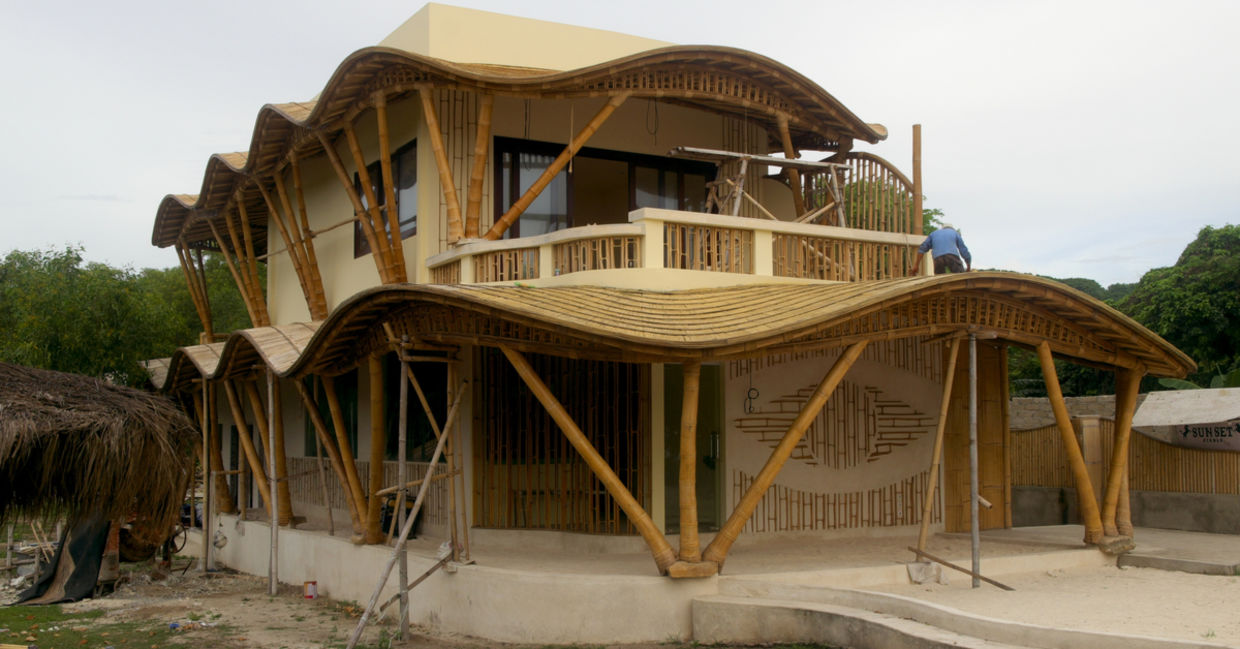
(Faizal Ramli / Shutterstock.com)
Bamboo is one of the fastest growing plants in the world. Flexible and lightweight, Bamboo is a sustainable building material that is actually stronger than wood, bricks or even concrete.
This is especially important in earthquake prone areas of the world like Indonesia. For a building to be earthquake proof, it needs to be strong enough and light weight, as well as flexible enough to move to be able to withstand shaking.
Bamboo construction was earthquake tested in 2018 on the Indonesian island of Lombok. After a series of earthquakes most of the concrete buildings near the epicenter were damaged or destroyed. Houses made of bamboo survived. Now, a new project is helping villages in the area rebuild with bamboo according to Fast Company.
“Bamboo is a lightweight material, and it’s very strong,” Marcin Dawydzik, a structural engineer at the London office of Ramboll, the engineering, design, and consulting company that designed a template for the bamboo houses told Fast Company. “As the earthquake happens, the house will move a little bit and wobble and shake.
But that actually means that the energy is being dissipated, and all that movement makes it survive very strong earthquakes,” Dawydzik said.
The engineer became involved in the project after he found out that a friend living in Lombok's bamboo house survived while her neighbors poorly constructed concrete homes did not. “I thought, I’m an engineer, working for an engineering company,” he said. “I have the skills. How can we help?”
That's when he came to Indonesia to see the destruction first-hand. According to a company press release, he said, "Villages were flattened with bricks and rubble scattered all around, in many cases the building foundations were all that remained. This was not an unusually powerful earthquake for the region, but lack of reinforcement in the buildings meant the damage, and consequential loss of life, was far greater than it should have been.
"What I found even more disturbing was that communities had already started rebuilding with the same absence of structural integrity that had existed in the destroyed buildings!”
That's when he began to work on a bamboo design that would be able to withstand earthquakes. First, Dawydzik and his team of engineers met with local people to ascertain what their needs were so that they didn't impose their western ideas on the designs.
Convincing people to use bamboo was an issue because even though it was readily available and used in Indonesia for construction, there was a stigma attached to it.
“Bamboo is viewed in Indonesia a little bit as a kind of poor man’s timber,” he told Fast Company. “That’s what they call it…They look to the Western world and they see big concrete buildings full of glass and steel and concrete and they want to live the same way.”
But, Dawydzik points out that concrete is only as strong as the reinforcements inside it and if the building is badly designed or if the concrete is made incorrectly, the building will fail during an earthquake. Concrete is also not an environmentally sound building material and contributes to climate change.
When the engineering team returned to London, they partnered with researchers at the University College London (UCL) who used 3D scanning of bamboo to make the home model as structurally sound as possible. They wanted to create a digital blueprint of each bamboo pole used according to Rodolfo Lorenzo, an engineering professor at the university. This enabled the engineers to understand how each pole would perform.
Three model homes were built in three villages in late 2019 when the engineers partnered with a local nonprofit Grenzeloos Milieu. They used both skilled and unskilled community members and explained how the new structures would resist earthquakes. During the building of the model homes, a UCL team scanned every piece of bamboo used.
The nonprofit is now working with the communities to grow their own bamboo that will be used to construct houses. Young bamboo shoots can be used for food, and after two years to construct furniture and after five years, the plants are large enough to build houses from according to Fast Company.
The team is also currently working to tweak the design and to create a DIY manual that is similar to what you get from IKEA. Only you are not assembling a table or chair, you are building a home. This bamboo structure can be used anywhere bamboo grows to build strong, safe, affordable, and green homes.
YOU MIGHT ALSO LIKE:
Norway will Pay Indonesia to Reduce Deforestation and Cut Emissions
Build Your Own Bamboo Bicycle With This Awesome DIY Kit
This New Rapid Response Factory Will Build Post-Disaster Housing







